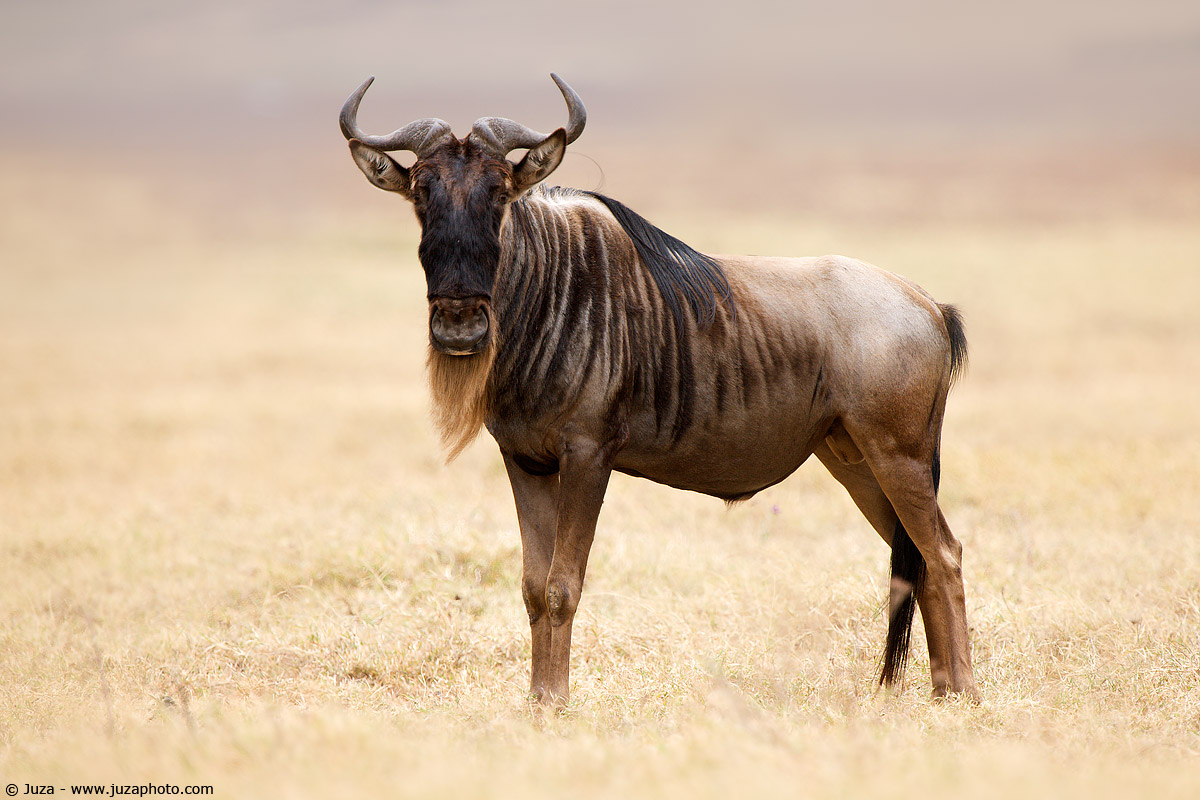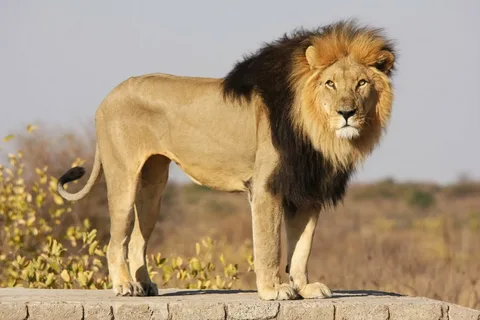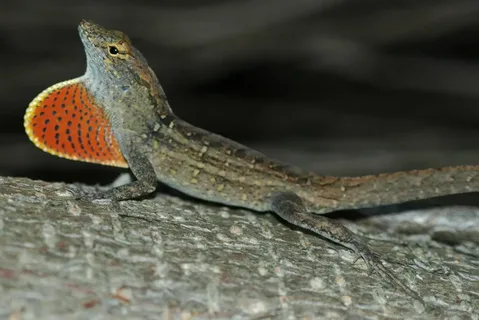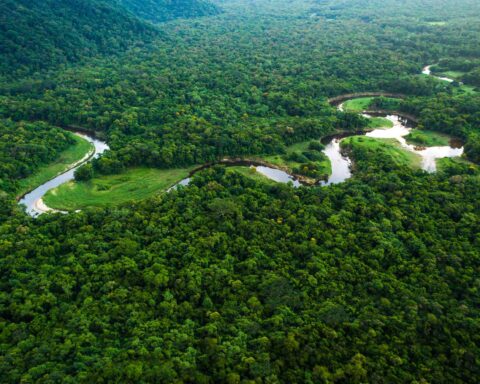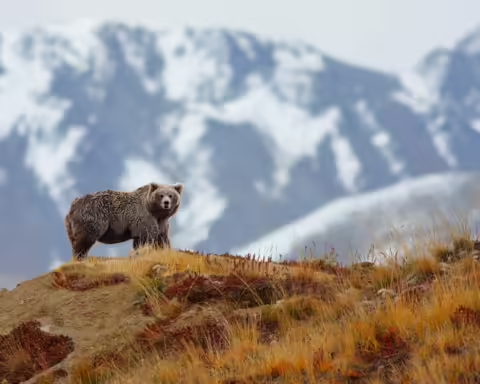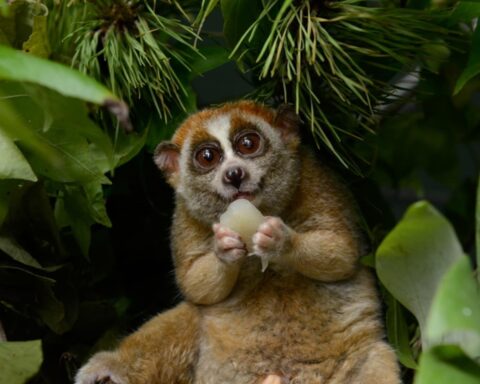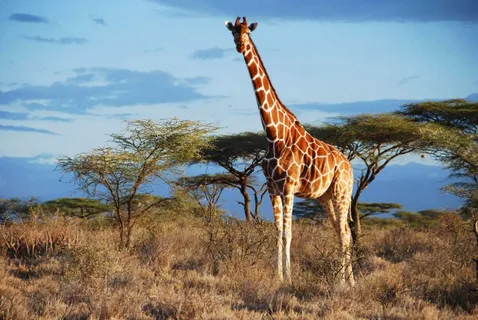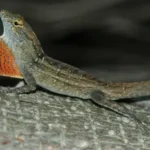Characteristics of Populous Animals
Traits That Contribute to High Population Numbers
The ability to thrive in various environments is crucial for species survival, and certain traits enable animals to adapt and succeed in a wide range of conditions.
Fecundity, the capacity for rapid reproduction, is another key characteristic that contributes to high population numbers. Many highly reproductive species have evolved mechanisms such as ovoviviparity (producing live young), where females can produce multiple offspring at a time.
The presence of specific genetic traits also plays a significant role in enabling populations to grow. For example, some species have developed genetic variation, which allows them to adapt quickly to changing environments and exploit new resources.
Migratory behavior is another vital trait that can contribute to high population numbers. By traveling to areas with abundant food or suitable habitats, animals can increase their chances of survival and reproduction.
The ability to exploit multiple resources is also important for species that are highly successful. This may involve feeding on a variety of plants or animals, as well as being able to survive in different types of environments.
Certain species have developed unique physical attributes that enable them to thrive in specific ecological niches. For example, large body size can be an advantage for herbivores that need to feed on large amounts of vegetation, while small body size can allow for greater mobility and flexibility in species that need to adapt quickly to changing environments.
Another important trait is the ability to form complex social structures. This can help to increase a species’ chances of survival by providing additional support and protection for individuals, as well as allowing them to cooperate and work together to achieve common goals.
The ability to defend against predators is also crucial for many highly populous animal species. By developing defensive mechanisms such as camouflage, warning calls, or aggressive behavior, animals can protect themselves from predation and maintain their populations.
Lastly, the ability to rapidly colonize new areas can be a key factor in enabling high population numbers. This may involve spreading through human activities, such as trade or travel, or by natural means, such as dispersal through rivers or wind.
The ability to reproduce quickly, short gestation periods, and high birth rates are essential traits for animals with large populations.
The ability to reproduce quickly, short gestation periods, and high birth rates are essential traits for animals with large populations.
This is particularly true for species that have adapted to live in environments where resources are abundant and predators are scarce, such as fish in the ocean or insects in a field.
One example of an animal with a large population is the house mouse (Mus musculus). They can breed throughout the year and produce litters of up to 12 young, with females able to reproduce again shortly after giving birth.
Another example is the rabbit (Oryctolagus cuniculus), which has a short gestation period of just over 28 days and can produce multiple litters per year. A single female rabbit can have up to eight babies per litter, making them one of the fastest breeding animals in the world.
The mosquito (family Culicidae) is another example of an animal with high reproductive rates. Females can lay up to 500 eggs at a time and may go through multiple generations in a single summer. This allows mosquitoes to quickly adapt to changing environments and colonize new areas.
Crickets are also known for their rapid reproduction, with females able to produce several egg sacs per month. Each egg sac can contain up to 400 eggs, making it possible for crickets to rapidly colonize new areas after a disturbance or disaster.
The zebrafish (Danio rerio) is another species with a high reproductive rate, with females able to lay hundreds of eggs at a time and males able to fertilize multiple batches of eggs in their lifetime. This allows the population to quickly grow and adapt to changing environments.
These are just a few examples of animals with large populations that have adapted to reproduce quickly, with short gestation periods and high birth rates. These traits are essential for maintaining a stable population size and allowing them to thrive in their environment.
Density and Distribution Patterns
The concept of density and distribution patterns is crucial in understanding the behavior and characteristics of various animal populations on our planet. This phenomenon refers to the way species spread out across a given territory, influencing factors such as population growth, resource competition, and habitat availability.
Density can be defined as the number of individuals per unit area or volume within a particular ecosystem. It is often measured using indices such as population density (e.g., number of animals per square kilometer) or biomass density (e.g., amount of organic matter per unit area).
Some examples of animals that exhibit high-density populations include:
- Ants – they can reach densities up to 100,000 individuals per hectare in tropical rainforests.
- Sardines and anchovies – these fish are often found in massive schools with densities exceeding 10 million individuals per square kilometer.
- Locust swarms – the desert locust, for instance, can form swarms with populations of tens of billions of individuals covering vast areas.
Certain factors contribute to high-density animal populations.
- Food availability: Regions rich in food resources often support denser populations.
- Habitat type and quality: Areas with optimal conditions, such as suitable temperature ranges, moisture levels, and shelter, foster higher population densities.
- Lack of predation: Regions where predators are scarce or absent can lead to the growth of dense animal populations.
Conversely, some species exhibit low-density populations due to various reasons such as:
- Space requirements: Large animals like elephants may need extensive territories to roam and feed.
- Predator avoidance: Species that are vulnerable to predation might disperse over a larger area for safety.
- Migration patterns: Migratory species often travel long distances, resulting in sparse populations along their migration routes.
The distribution pattern of animal populations can be influenced by various environmental factors such as climate, vegetation, and human activities. Understanding these dynamics is essential for effective conservation strategies and predicting changes to ecosystems due to global climate shifts or other disturbances.
Species that live in dense groups or have a wide distribution across the globe often contribute to their high population numbers.
Social species, which are those that live in dense groups or flocks, tend to experience higher population growth rates than solitary ones.
This is because social animals often benefit from shared resources and cooperative behaviors, such as foraging, defending territories, and caring for young. For example, some ant species have been known to form massive colonies with hundreds of thousands of workers.
Another factor that contributes to high population numbers in some animal groups is their ability to adapt and disperse over a wide geographic range.
This allows them to colonize new areas quickly and take advantage of new resources, which can lead to rapid population growth. Some species of birds, such as pigeons and house sparrows, are examples of animals that have successfully adapted to a wide range of habitats around the world.
Some animals, however, live in dense groups not only for social reasons but also because their ecological niches require it. For example, some schooling fish like sardines or anchovies are extremely abundant and often form huge schools due to the fact that predators find it difficult to hunt them in such large numbers.
Additionally, animals with a wide distribution may not necessarily be social creatures but rather species that are highly mobile or have a strong migratory pattern. These species can disperse across their habitats rapidly and colonize new areas quickly.
Examples of highly mobile species include migratory birds like the Arctic tern and whales such as the gray whale, which migrate thousands of miles each year to reach their breeding grounds.
In summary, both social behavior and a wide geographic distribution play critical roles in enabling some animal populations to grow rapidly. However, it is often a combination of these factors that ultimately leads to high population numbers.
Biodiversity and Ecosystem Services
Crop Pests and Livestock Predators
The most populous animal on earth is the ant, with some species being found in almost every habitat around the world. However, when it comes to crop pests and livestock predators, other animals come to mind.
Crop pests are organisms that damage or destroy crops, leading to significant economic losses for farmers and agricultural industries. Some of the most common crop pests include aphids, whiteflies, and caterpillars, which can cause damage to a wide range of crops including fruits, vegetables, grains, and legumes.
Some of the most populous animals that are considered major crop pests include the Africanized honey bee, also known as the “killer bee,” which is found in Central and South America, and the desert locust, which can migrate across entire continents in search of food.
Livestock predators, on the other hand, are animals that prey upon livestock such as cattle, sheep, goats, and horses. Some of the most common livestock predators include coyotes, wolves, and mountain lions, which can cause significant losses to farmers and ranchers by attacking their animals and destroying their property.
Some of the most populous animal species that are considered major livestock predators include the red fox, which is found in Europe and Asia, and the African wild dog, also known as the “painted dog,” which is found in sub-Saharan Africa.
In terms of sheer numbers, some of the most populous animals on earth that are not necessarily crop pests or livestock predators but are worth mentioning include the common mouse, which can be found in almost every habitat around the world and is estimated to have a population of over 1 billion individuals; the housefly, which is one of the most widely distributed insects on earth with an estimated population of over 1 trillion individuals;
and the domestic chicken, which has an estimated global population of over 19 billion individuals. While not all domestic chickens are considered pests or predators, they do contribute to animal populations that have significant economic and social impacts.
Animals like rodents, insects, and other pests can significantly affect agricultural production and human food security.
The impact of animals like rodents, insects, and other pests on agricultural production and human food security cannot be overstated. These pests are capable of causing significant damage to crops, reducing yields, and affecting the quality of produce. Rodents, for example, can chew through seedlings and fruits, while insects such as aphids, whiteflies, and caterpillars can feed on plant sap, leaving behind a trail of destruction.
According to a report by the Food and Agriculture Organization (FAO) of the United Nations, pests are responsible for up to 40% of crop losses worldwide. Insects alone account for around 25% of these losses, with some studies suggesting that if left unchecked, insect infestations could lead to a global loss of over $1 trillion in crops each year.
Rodents, on the other hand, can cause significant damage to stored grains and other agricultural products. In Africa alone, it’s estimated that rodents destroy up to 10% of maize yields, resulting in substantial losses for farmers and food security concerns for local communities.
The impact of these pests is not limited to crop losses alone. They can also affect human health by spreading diseases such as rodent-borne typhus and Leptospirosis, which can be transmitted through contact with contaminated water or food. Insect-borne illnesses like malaria, dengue fever, and Zika virus are also a significant concern.
In terms of the most populous animals on earth, insects are the clear winners, accounting for around 80% of all species described to date. Beetles alone make up an astonishing 25% of known insect species. Rodents come second, with over 2,000 different species worldwide.
Given the significant impact that these pests have on agricultural production and human food security, it’s essential that we adopt a comprehensive approach to pest management. This includes using integrated pest management (IPM) strategies that combine physical, cultural, biological, and chemical methods to minimize crop losses.
In addition, governments and organizations can support farmers by providing access to affordable pesticides, seeds, and other necessary resources. They can also invest in research and development of new technologies that help prevent or mitigate the effects of pest infestations.
Finally, it’s essential that we promote awareness about the importance of pest management and its impact on food security. By working together, we can reduce crop losses, improve agricultural productivity, and ensure a more secure future for generations to come.
Ecological Balance
The concept of ecological balance is crucial to maintaining the health and stability of ecosystems worldwide. At its core, it refers to the delicate interplay between various species and their environment, which ensures that no single component dominates or outcompetes others.
Ecosystems on our planet are home to an astonishing array of wildlife, with certain populations standing out for their sheer numbers. These most populous animals on Earth are not only fascinating creatures but also play vital roles in maintaining the balance within their respective environments.
The first among them is the Ant (Various Species), which constitutes nearly one-third of all terrestrial animals on our planet! With estimates suggesting there are trillions of individual ants worldwide, they undoubtedly form an integral part of the ecological puzzle. Their colonies serve as superorganisms that facilitate nutrient cycling, seed dispersal, and pest control, all while maintaining intricate social hierarchies.
The second most populous animal group is the Fruit Fly (Drosophilidae), with some species boasting a staggering global population of over 100 trillion individuals! These tiny creatures have become crucial in research settings due to their relatively simple life cycle and genetic tractability. Beyond laboratories, fruit flies contribute significantly to ecological balance by pollinating plants, serving as food sources for other animals, and participating in nutrient cycling.
The third category comprises the Common Cockroach (Blattodea), numbering approximately 4 trillion worldwide. While often stigmatized due to their association with filth, these insects are vital decomposers and play a significant role in waste management, facilitating the breakdown of organic matter into nutrients that plants can utilize.
Finally, among the most populous animals on Earth, we have the Mosquito (Culicidae), whose global population is estimated at roughly 1 trillion individuals. While infamous for their association with disease transmission, mosquitoes also serve as pollinators and food sources, contributing to the health of ecosystems in more ways than one.
These species illustrate that even though individual numbers may vary significantly from one group to another, they all contribute fundamentally to ecological balance through various mechanisms. Understanding these roles can help us develop strategies for maintaining or restoring ecosystem health and biodiversity in regions where human activities have disrupted natural balances.
The presence of large animal populations helps maintain ecological balance and supports the functioning of ecosystems.
The presence of large animal populations plays a crucial role in maintaining ecological balance and supporting the functioning of ecosystems. These animals, also known as megafauna or keystone species, have a significant impact on their environment through various mechanisms.
Firstly, large animal populations help to regulate the populations of smaller species through predation. Predators like lions, bears, and wolves play a vital role in controlling the numbers of herbivores, which can otherwise overgraze vegetation and alter ecosystem dynamics. This regulatory function is essential for maintaining healthy and diverse ecosystems.
Secondly, large animal populations contribute to nutrient cycling and soil formation through their digging, burrowing, and trampling activities. For example, elephants are known to dig watering holes and create pathways that help to disperse seeds and facilitate the growth of new vegetation. Similarly, beavers construct dams that alter water flow and create wetlands that support a variety of aquatic life.
Thirdly, large animal populations help to maintain ecosystem resilience by creating habitat diversity and promoting landscape connectivity. For instance, migratory herbivores like wildebeests and zebras create pathways through grasslands and savannas, which in turn facilitate the movement of other species. This connectivity is essential for maintaining genetic diversity and ensuring the long-term survival of species.
Finally, large animal populations support ecosystem services that benefit human societies, such as clean air and water, soil formation, and climate regulation. For example, elephants help to disperse seeds in forests, which maintains forest diversity and supports timber production and carbon sequestration. Similarly, beavers create wetlands that filter water and provide habitat for fish and other aquatic species.
Some of the most populous animals on Earth include:
- Lion (Panthera leo): Estimated population: 23,000 – 39,000
- Buffalo (Bubalus bubalis): Estimated population: 30-50 million
- Caribou (Rangifer tarandus): Estimated population: 4.5-7.5 million
- Elephant (Loxodonta africana): Estimated population: 450,000 – 700,000
- Wildebeest (Connochaetes taurinus): Estimated population: 1-2 million
In conclusion, the presence of large animal populations is essential for maintaining ecological balance and supporting ecosystem functioning. These animals play a variety of roles that contribute to habitat diversity, nutrient cycling, and ecosystem resilience, which in turn support human societies through provision of ecosystem services.
Human Impact on Populous Animals
Habitat Destruction and Fragmentation
Habitat destruction and fragmentation refer to the processes by which natural habitats are degraded or destroyed, resulting in loss of biodiversity. This can occur due to various human activities such as deforestation, urbanization, agriculture, mining, and infrastructure development.
Some of the most populous animals on Earth that are affected by habitat destruction and fragmentation include the lion, elephant, rhinoceros, chimpanzee, gorilla, orangutan, and giraffe. These species inhabit vast areas of savannas, forests, grasslands, and wetlands that are being cleared or fragmented due to human activities.
The effects of habitat loss on these populations can be devastating, leading to reduced population sizes, isolation of sub-populations, increased competition for resources, and reduced genetic diversity. In some cases, local extinctions may occur, further threatening the long-term survival of these iconic species.
For example, African savannas are being converted into agricultural land or settlements, leading to fragmentation of lion populations. Asian forests are being cleared for palm oil plantations, resulting in habitat loss and isolation of orangutan populations. Similarly, elephant habitats in Africa and Asia are being destroyed due to human-wildlife conflict, logging, and agriculture.
Efforts to mitigate the effects of habitat destruction and fragmentation include conservation initiatives such as protected areas (national parks, wildlife sanctuaries), sustainable land-use planning, eco-tourism, and community engagement. These measures aim to maintain or restore habitats, reduce human-wildlife conflict, and promote coexistence with these magnificent species.
Additionally, addressing the root causes of habitat destruction and fragmentation, such as poverty and lack of education, is crucial for long-term conservation success. This requires collaboration between governments, local communities, NGOs, and international organizations to develop effective policies and practices that prioritize biodiversity conservation.
Habitat restoration efforts, such as reforestation or afforestation programs, can also help to reconnect fragmented habitats and promote species migration and genetic exchange. However, these initiatives require careful planning, monitoring, and management to ensure their effectiveness and long-term sustainability.
Humans have destroyed or fragmented habitats, leading to a decline in animal populations and biodiversity loss.
The impact of human activities on the environment has been profound, resulting in widespread destruction or fragmentation of habitats that were once home to a vast array of animal species. This loss of habitat has had far-reaching consequences, including a decline in animal populations and an overall reduction in biodiversity.
One of the main reasons for this decline is deforestation, which has led to the loss of forests as natural habitats for many animals. Forests provide a home for countless species of plants and animals, and their destruction not only harms these species but also disrupts entire ecosystems.
Another factor contributing to the decline in animal populations and biodiversity loss is pollution. Human activities such as industrial production, transportation, and waste management release pollutants into the air and water, which can harm or even kill animals. This pollution can come in many forms, including toxic chemicals, plastics, and climate-changing greenhouse gases.
In addition to deforestation and pollution, human activities such as agriculture, urbanization, and overfishing have also contributed to the decline in animal populations and biodiversity loss. These activities often result in the destruction of natural habitats, which can lead to a decrease in animal populations and an increase in extinction risk.
For example, elephants, giraffes, and rhinos are among the most populous animals on earth, with their numbers threatened by habitat loss and fragmentation. These animals require large areas of land to survive and reproduce, but human activities such as deforestation and agriculture have reduced their habitats significantly.
The bushmeat trade, which involves the hunting and consumption of wild animals for food, is another significant threat to animal populations. This practice can drive many species to extinction, especially in areas with high levels of poverty and limited law enforcement.
Finally, climate change also plays a major role in biodiversity loss and the decline of animal populations. Rising temperatures and changing weather patterns alter habitats and disrupt food chains, making it difficult for animals to adapt and survive.
The impact of human activities on the environment is complex and multifaceted, but it is clear that habitat destruction, pollution, agriculture, urbanization, overfishing, the bushmeat trade, and climate change are all major contributors to the decline in animal populations and biodiversity loss.
Causes and Consequences of Decline
The decline of most populous animals on earth is a pressing concern that has far-reaching consequences for ecosystems, biodiversity, and human societies. The primary cause of this decline can be attributed to various human activities such as habitat destruction, climate change, pollution, overfishing, and poaching.
Habitat destruction, often linked to deforestation and urbanization, is a major driver of species decline. As natural habitats are cleared or fragmented, animals lose their homes, food sources, and shelter, making it difficult for them to survive and thrive.
Climate change is another significant contributor to the decline of most populous animals. Rising temperatures alter ecosystems, disrupt food chains, and lead to changes in precipitation patterns, which can have devastating effects on animal populations that are adapted to specific environmental conditions.
Pollution, including plastic pollution, noise pollution, and chemical pollutants, has a profound impact on animal health and behavior. For instance, microplastics can be ingested by animals, causing physical harm and disrupting their digestive systems, while noise pollution can disrupt communication patterns among animals.
Overfishing and poaching are also significant threats to the decline of most populous animals. Overfishing depletes fish populations, compromising the food chain and ecosystems that depend on them. Poaching, driven by demand for animal parts such as rhino horn and elephant tusks, can drive species to extinction.
The consequences of the decline of most populous animals are multifaceted and far-reaching. Ecosystems lose biodiversity, which can lead to a decline in ecosystem services such as pollination, pest control, and nutrient cycling. Human societies also suffer from the loss of animal-based food sources, livelihoods, and cultural heritage.
Furthermore, the loss of most populous animals can have cascading effects on human well-being, including reduced access to clean water, increased risk of zoonotic diseases, and decreased resilience in the face of natural disasters. To mitigate these consequences, it is essential to adopt a comprehensive approach that incorporates conservation efforts, sustainable practices, and policy changes to protect and restore animal populations and ecosystems.
The main causes of population declines include hunting, overfishing, climate change, pollution, and humanwildlife conflict.
The main causes of population declines among the most populous animals on earth are multifaceted and far-reaching. These factors have a significant impact on various species, leading to a decline in their populations.
Hunting is a major contributor to the decline of many animal populations. Overhunting can deplete populations rapidly, especially for species that are hunted for their meat or other body parts.
- Poaching, which is the illegal hunting and trade of wildlife products, is a significant threat to many endangered species.
Overfishing is another major concern, as it can lead to the depletion of fish stocks and have cascading effects on marine ecosystems. This can impact not only commercial fisheries but also the livelihoods of people who depend on them for their food and income.
- Climate change is altering habitats, disrupting migration patterns, and affecting food availability, making it challenging for animals to adapt and survive.
Pollution from human activities such as industrial waste, agricultural runoff, and chemical contamination can have devastating effects on animal populations. This can include poisoning, habitat destruction, and genetic damage.
- Human-wildlife conflict occurs when animals encroach upon human-dominated landscapes in search of food or shelter, leading to retaliatory killings and other forms of persecution.
Addressing these challenges will require a concerted effort from governments, NGOs, local communities, and individuals to implement sustainable management practices, protect habitats, reduce pollution, and promote coexistence between humans and wildlife.
- Countries That Start With The Letter N - September 3, 2024
- Animals That Live In The Tundra - September 1, 2024
- Animals That Live In Madagascar - September 1, 2024


